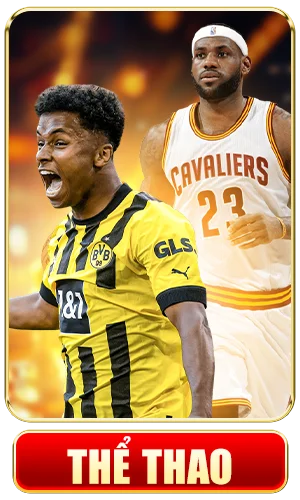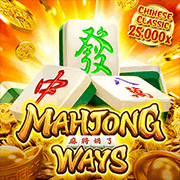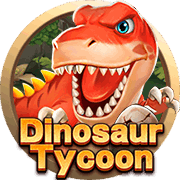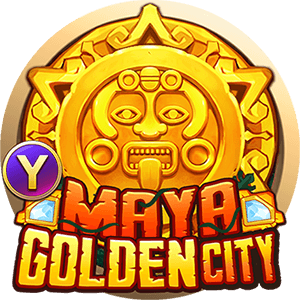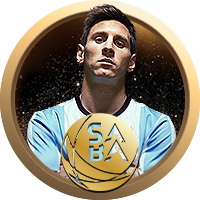66b – Thương hiệu số đột phá, mang trải nghiệm số đỉnh cao
66b – Thương hiệu số đột phá, mang trải nghiệm số đỉnh cao
Trong thế giới số ngày càng phẳng, 66b nổi lên như một ngọn hải đăng của sự đơn giản hóa và tối ưu hóa trải nghiệm cho người dùng ở mọi tầng lớp. 66b không chỉ là một thương hiệu công nghệ mà còn là một lời cam kết về hiệu suất, an toàn và sự thấu hiểu sâu sắc về nhu cầu của cộng đồng người dùng hiện đại. Khi ta nói tới 66b, ta đang nói tới một hệ sinh thái số được thiết kế để biến những ý tưởng phức tạp thành những giải pháp dễ tiếp cận, nhanh nhạy và có thể mở rộng một cách tự nhiên. Điều làm 66b khác biệt không chỉ đến từ công nghệ tiên tiến mà còn từ cách mà nó kể câu chuyện của mình cho người dùng, từ cách mà nó lắng nghe phản hồi và biến nó thành hành động.
Trải nghiệm 66b không chỉ là việc tương tác với sản phẩm hay dịch vụ, mà còn là một hành trình thấu hiểu và đồng hành. 66b chú trọng đến việc giảm thiểu sự nhiễu loạn trong cuộc sống số của người dùng, tối ưu hóa thời gian và tăng cường sự tin cậy. Khi bạn bắt đầu trải nghiệm 66b, bạn sẽ nhận ra một triết lý trung dung: công nghệ phục vụ con người trước, sau đó mới là công nghệ. Đó là lý do vì sao 66b luôn tìm tòi và thử nghiệm những mô hình mới, để mỗi lần ra mắt, sản phẩm lại mang lại trải nghiệm mượt mà, trực quan và đầy cảm hứng.
Với một câu khẩu hiệu ngắn gọn nhưng đầy ý nghĩa – kết nối mọi thứ, đơn giản hoá mọi thứ – 66b dần hình thành một cộng đồng người dùng tin cậy và lôi cuốn. Bạn có thể đã nghe về 66b từ bạn bè, đồng nghiệp hoặc qua các câu chuyện trên mạng xã hội. Dù ở bất kỳ đâu, trải nghiệm 66b luôn cố gắng mang lại cảm giác được lắng nghe và được chăm sóc như một phần của hành trình số chung. Đây là lý do tại sao tôi muốn chia sẻ câu chuyện này với bạn, để bạn có thể tự tin khám phá và đánh giá 66b dựa trên trải nghiệm thực tế của riêng mình.

Nguồn gốc và sứ mệnh của 66b
66b được thành lập từ một nhóm nhà sáng lập trẻ đầy nhiệt huyết, đồng thời mang trong mình câu chuyện về mong muốn vượt qua những rào cản truyền thống trong ngành công nghệ. Tên gọi 66b được kết tinh từ ý tưởng về sự cân đối giữa hai chữ số 6 – biểu tượng của sự kiên định, bền bỉ, và chữ b – tượng trưng cho sự mềm mại, linh hoạt và bản sắc cá nhân hóa mà thương hiệu muốn mang đến cho từng người dùng. Đây không chỉ là một cái tên mà còn là một tín hiệu về triết lý hoạt động: kiên cường kết hợp với sự nhạy bén để tạo nên trải nghiệm số dễ tiếp cận cho mọi người.
Sứ mệnh của 66b được mô tả bằng một câu nói đơn giản nhưng đầy chất lượng: đưa công nghệ hiện đại tới gần hơn với mọi người, đồng thời tôn trọng sự riêng tư, an toàn và tính minh bạch. Trong hành trình phát triển, 66b đã xác định ba trụ cột cốt lõi: vành đai công nghệ mở, thấu hiểu người dùng và trách nhiệm xã hội. Mỗi quyết định được cân nhắc dựa trên liệu pháp của người dùng, từ kiến trúc hệ thống, cách triển khai dịch vụ cho đến cách giao tiếp và chia sẻ thông tin. 66b không sợ thử nghiệm và sẵn sàng chấp nhận thất bại như một phần của quá trình học hỏi, miễn sao kết quả cuối cùng mang lại giá trị thực cho cộng đồng.
Trong hành trình thương hiệu, 66b đã trải qua nhiều cột mốc quan trọng hợp lại thành một chu kỳ phát triển liên tục. Từ những ngày đầu tiên dành cho một nhóm nhỏ người đam mê công nghệ cho tới sự mở rộng quy mô toàn cầu, mỗi giai đoạn đều mang đến bài học quý giá về sự kiên nhẫn, khả năng thích nghi và tầm nhìn dài hạn. Nói một cách dễ hiểu, 66b đã biến ý tưởng thành hiện thực bằng cách lắng nghe và hành động, không bỏ qua bất kỳ phản hồi nào từ người dùng và luôn trau chuốt để mọi trải nghiệm đều có thể được cải thiện.

Các sản phẩm và dịch vụ cốt lõi của 66b
66b hiện có một dải sản phẩm và dịch vụ được thiết kế để đáp ứng nhu cầu của cả cá nhân lẫn doanh nghiệp. Trong đó nổi bật là nền tảng số tích hợp dành cho doanh nghiệp nhỏ và vừa, các công cụ hỗ trợ phát triển, và hệ sinh thái bảo mật và tối ưu hóa hiệu suất. Nền tảng của 66b giúp người dùng nhanh chóng kết nối với nhiều dịch vụ khác nhau, đồng thời đảm bảo tính đồng nhất và đồng bộ dữ liệu trên mọi thiết bị. Trải nghiệm 66b trở nên liền mạch khi người dùng có thể bắt đầu từ những công cụ cơ bản và dần nâng cấp lên các giải pháp phức tạp hơn mà vẫn duy trì được sự dễ dùng.
Trong mảng dịch vụ cá nhân, 66b mang tới các công cụ cá nhân hóa và quản lý số liệu cá nhân an toàn. Người dùng có thể quản lý danh mục nội dung, nhắc nhở, quản lý thời gian và tối ưu hóa quy trình làm việc hàng ngày. Sự khác biệt ở đây nằm ở cách 66b dựa trên dữ liệu người dùng để đưa ra đề xuất phù hợp, nhưng luôn tôn trọng sự riêng tư và cho phép người dùng kiểm soát mọi khía cạnh của dữ liệu cá nhân.
Một trong điểm mạnh của 66b là khả năng tích hợp với các dịch vụ bên ngoài, từ công cụ cộng tác cho nhóm đến các nền tảng thương mại điện tử và thanh toán. Việc tích hợp này cho phép doanh nghiệp và cá nhân tiết kiệm thời gian, tăng tính linh hoạt và thúc đẩy sự hợp tác giữa các bên. Khi trải nghiệm 66b, người dùng sẽ nhận thấy sự đồng bộ dữ liệu, nhanh chóng di chuyển giữa các tác vụ và một mức độ tùy chỉnh cao giúp tối ưu hoá hiệu quả công việc.

Lợi thế và sức cạnh tranh của 66b
Khả năng cạnh tranh của một thương hiệu công nghệ được xác định bởi sự kết hợp giữa công nghệ, sự dịch chuyển nhanh, và khả năng phục vụ khách hàng. 66b đã và đang xây dựng một hệ sinh thái có nhiều ưu thế riêng biệt giúp hãng nổi bật giữa hàng loạt đối thủ cạnh tranh. Dưới đây là những ưu thế nổi bật mà 66b tự hào cạnh tranh trên thị trường hiện nay.
Thứ nhất, công nghệ tiên tiến và khả năng mở rộng cao. 66b đầu tư mạnh vào nền tảng hạ tầng và các công cụ phát triển để đảm bảo rằng mỗi sản phẩm mới có thể mở rộng mà không làm giảm hiệu năng. Hệ thống được thiết kế để xử lý lưu lượng lớn, tối ưu hóa thời gian phản hồi và giảm thiểu thiểu tốc độ chậm khi tích hợp với các dịch vụ bên ngoài. Kết quả là người dùng có được trải nghiệm mượt mà, dù họ đang làm việc với khối lượng dữ liệu khổng lồ hay đang tăng trưởng quy mô kinh doanh.
Thứ hai, sự an toàn và bảo mật là một ưu tiên hàng đầu. 66b áp dụng các chuẩn bảo mật cao nhất, mã hoá dữ liệu ở cả trạng thái nghỉ và khi truyền, kèm theo các biện pháp giám sát và phản hồi sự cố nhanh chóng. Người dùng có thể yên tâm rằng dữ liệu của họ được giữ kín và được quản lý theo các nguyên tắc minh bạch. Điều này tạo niềm tin và tăng cường sự trung thành của khách hàng cũng như đối tác.
Thứ ba, hỗ trợ và dịch vụ khách hàng 24 7. Với một đội ngũ chăm sóc khách hàng toàn cầu, 66b cam kết trả lời nhanh và giải quyết vấn đề hiệu quả. Người dùng có thể nhận trợ giúp qua nhiều kênh khác nhau, từ chat trực tuyến, email cho tới đường dây hỗ trợ khẩn cấp. Sự sẵn có và sự đồng cảm trong quá trình hỗ trợ khiến người dùng cảm thấy họ không chỉ là một người dùng mà là một đối tác đồng hành qua mỗi bước số hoá.
Thứ tư, sự đổi mới liên tục. 66b duy trì một quỹ nghiên cứu và phát triển để thử nghiệm các công nghệ mới như trí tuệ nhân tạo, máy học, và các giải pháp tự động hoá. Những cải tiến được cập nhật liên tục, mang lại trải nghiệm ngày càng tối ưu và giúp khách hàng nắm bắt được cơ hội từ xu hướng số hoá. Tất cả những đổi mới này được triển khai một cách có trách nhiệm và có thể đo lường được tác động đối với người dùng và cộng đồng.
Thứ năm, sự hài hòa trong hệ sinh thái. 66b không chỉ là một sản phẩm hay một dịch vụ riêng lẻ; đó là một hệ sinh thái tích hợp, nơi các công cụ và dịch vụ bổ sung cho nhau. Người dùng có thể di chuyển giữa các chức năng mà không phải đối mặt với rào cản kỹ thuật, giúp giảm chi phí vận hành và tối ưu hoá nguồn lực. Đó là một lợi thế cạnh tranh lớn giúp 66b duy trì sự hấp dẫn với khách hàng cá nhân và doanh nghiệp.

Trải nghiệm người dùng và phản hồi từ cộng đồng
Trải nghiệm người dùng là nguồn dữ liệu quan trọng để 66b cải tiến sản phẩm. Trong cộng đồng của mình, 66b ghi nhận nhiều phản hồi từ người dùng qua các kênh xã hội và diễn đàn đánh giá. Họ nói về sự dễ sử dụng, tính trực quan và khả năng tùy biến. Người dùng cho biết họ có thể bắt đầu với các công cụ cơ bản và dần tích hợp thêm các tính năng phức tạp hơn khi nhu cầu tăng lên. Điều này cho thấy 66b biết cách đáp ứng các nhu cầu khác nhau một cách linh hoạt, từ người mới bắt đầu đến các chuyên gia công nghệ.
Một số phản hồi tiêu biểu cho thấy trải nghiệm 66b mang lại lợi ích thực tế cho công việc và cuộc sống. Người dùng cho biết họ có thể tiết kiệm thời gian nhờ tự động hóa các tác vụ lặp đi lặp lại, đồng thời tăng tính nhất quán dữ liệu giữa các nền tảng. Người làm kinh doanh cũng ghi nhận được sự tăng trưởng hiệu quả nhờ các công cụ phân tích và báo cáo tích hợp sẵn. Trong nhiều câu chuyện, người dùng nhắc tới cụm từ trải nghiệm 66b như một hành trình dài hơi, nơi mọi bước đi đều hướng tới sự cải thiện liên tục và sự thấu hiểu sâu sắc từ phía đội ngũ phát triển.
Trong các bài đánh giá 66b, người dùng thường nhấn mạnh về chất lượng dịch vụ khách hàng và sự minh bạch trong quá trình triển khai. Họ ghi nhận rằng đội ngũ hỗ trợ không chỉ giải quyết vấn đề mà còn đưa ra các gợi ý tối ưu hoá quy trình làm việc. Đây là yếu tố góp phần làm cho cộng đồng 66b trở nên gắn kết và tích cực chia sẻ các mẹo, mẹo nhỏ và kinh nghiệm sử dụng sản phẩm. Những câu chuyện thành công như vậy đã lan toả và tạo động lực cho những người khác, khuyến khích họ thử nghiệm và khám phá thêm các tính năng khác của hệ sinh thái 66b.

Tương lai và tầm nhìn của 66b
Nhìn về phía tương lai, 66b đặt mục tiêu mở rộng phạm vi ảnh hưởng và tăng cường vai trò của mình trong cộng đồng toàn cầu. Kế hoạch phát triển tập trung vào ba yếu tố chính: mở rộng khu vực địa lý, nâng cao khả năng tích hợp và tối ưu hoá trải nghiệm người dùng thông qua các công nghệ mới. Việc mở rộng địa lý không chỉ để tăng quy mô mà còn để mang lại cơ hội cho nhiều nhóm người dùng tiếp cận công nghệ dễ dàng hơn, đồng thời tạo ra một mạng lưới đối tác toàn cầu vững chắc. Việc tối ưu hoá trải nghiệm người dùng không dừng lại ở giao diện hay tốc độ mà còn bao gồm sự an toàn, độ bền vững và tính bền vững xã hội. 66b cam kết phát triển những giải pháp có trách nhiệm và mang lại lợi ích dài hạn cho cộng đồng cũng như môi trường.
Trong bối cảnh xu hướng số hóa toàn cầu, 66b sẽ tiếp tục đầu tư vào trí tuệ nhân tạo, dữ liệu và bảo mật để đảm bảo rằng nó có thể thích ứng nhanh với mọi thay đổi. 66b hiểu rằng công nghệ chỉ có giá trị khi nó phục vụ con người – vì vậy mọi quyết định phát triển đều bắt nguồn từ trải nghiệm người dùng. Sứ mệnh của 66b là duy trì đà đổi mới, đồng thời duy trì cam kết của mình với sự tin cậy và sự tôn trọng sự đa dạng văn hóa và ngôn ngữ của cộng đồng toàn cầu.

Tổng kết và lời mời trải nghiệm
66b đã và đang chứng tỏ mình là một thương hiệu số đột phá, không chỉ bởi công nghệ mà còn bởi cách mà nó tôn trọng và gắn kết với người dùng. Trải nghiệm 66b mang đến một hành trình số học hỏi và trưởng thành, nơi mỗi người có thể tự do khám phá, cá nhân hóa và đồng hành cùng sự tiến bộ của nền công nghiệp số. Với cam kết về bảo mật, sự hỗ trợ tận tâm và hệ sinh thái tích hợp, 66b tự tin là đối tác đồng hành tin cậy cho bạn trên hành trình số hóa.
Nếu bạn đang tìm kiếm một nền tảng có thể đồng hành cùng bạn từ những bước đầu đến mức độ phức tạp của một hệ sinh thái số, hãy thử trải nghiệm 66b. Đánh giá 66b sau một thời gian sử dụng sẽ cho bạn cái nhìn toàn diện về cách công nghệ có thể nâng cao chất lượng công việc và cuộc sống. Và nếu bạn đang ở giai đoạn đánh giá lựa chọn, hãy lắng nghe cảm nhận từ cộng đồng và các câu chuyện thành công, vì đó là nguồn cảm hứng để bạn bắt đầu hành trình riêng của mình với 66b.


